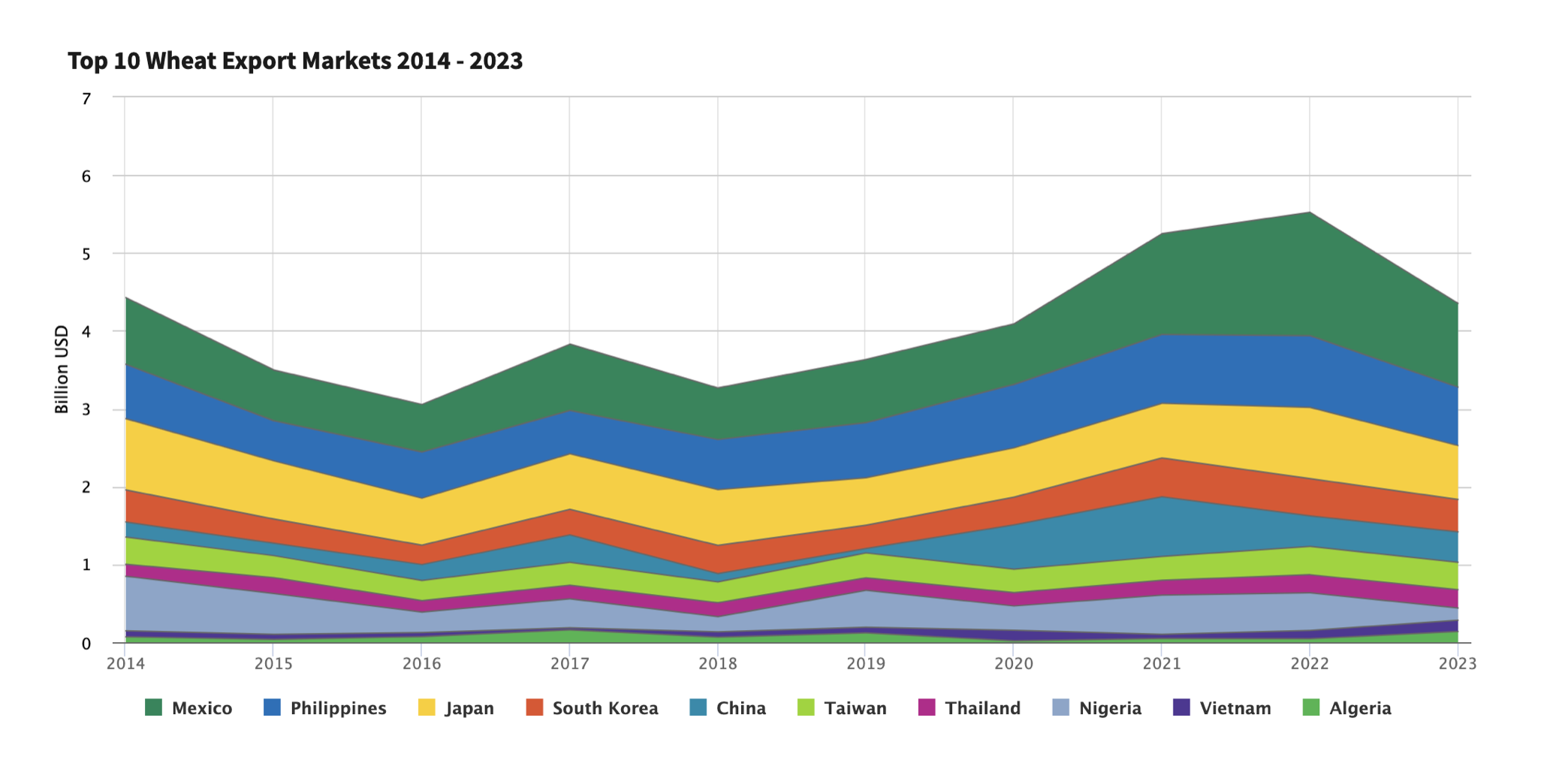Does the US Export Wheat
Sign up for Ag Commodities Focus: Stay ahead of the curve on ag commodities trends.
The US is a major player on the global wheat export stage, consistently ranking among the top five exporters worldwide. While other countries hold the top spot for wheat production, the US boasts a significant export market with a loyal customer base. This article looks into the details of US wheat exports, exploring the destination of American wheat, the value of this trade, and some interesting trends in recent years.
How Much Wheat Does the US Export?
The US exports significant amounts of wheat to various countries around the world. Here are some key points about US wheat exports:
In 2023, the value of US wheat exports reached $6.08 billion, down from the 3-year-average of $7.21 billion.
The top three markets for US wheat exports in 2023 were Mexico ($1.08 billion), the Philippines ($750 million), and Japan ($692 million).
Mexico, the Philippines, and Japan continue to be consistent buyers of US wheat, accounting for over 40% of total US wheat exports in 2023.
Chart: US Wheat Export Markets

The USDA currently forecasts wheat ending stocks in 2024/25 to be 766 million bushels, up 11 percent from 2023/24, and would be the highest level since 2020/21
Which Countries Are the Main Importers of US Wheat
The main importers of US wheat are:
- Mexico - Imported $1.08 billion worth of US wheat in 2023, making it the top market for US wheat exports.
- Philippines - Imported $750 million worth of US wheat in 2023, the second largest market.
- Japan - Imported $692 million worth of US wheat in 2023, the third largest market.
- China remains a significant wheat trading partner with the US despite the slowdown in trading volume. In 2023, China imported $390 million worth of U.S. wheat.
While the US typically ranks among the top five global wheat exporters, its share of global wheat exports is trending lower, and its growth rate is slowing down. According to the latest data released by the USDA, the compound average growth rate of wheat export is -2.34%, meaning the wheat exports are declining overtime. Mexico, the Philippines, Japan, Egypt, Indonesia, and Turkey remain consistent and significant importers of US wheat.
What Factors Affect the Demand for US Wheat Exports
The demand for US wheat exports is influenced by several key factors, as highlighted in the provided sources:
- Global Economic Conditions: Demand for US agricultural products, including wheat, is influenced by global economic conditions, trade policies, world population, income levels, and economic growth.
- Supply and Prices: Changes in global supplies and prices play a significant role in affecting the demand for US wheat exports. Tight supplies in key producing countries like the US and Canada, along with price fluctuations, impact the export market.
- Competition from Other Countries: Increased competition from major wheat exporters like Russia, Canada, Australia, Ukraine, and the EU can affect the demand for US wheat exports, especially in price-sensitive markets in Africa, the Middle East, and Southeast Asia.
- Weather Events: Weather conditions such as floods, freezes, and droughts can impact domestic and foreign agricultural commodity supplies, including wheat. These events can disrupt trade flows and influence the demand for US wheat exports.
- Government Support and Regulations: Government policies, support programs, and regulations can also affect the demand for US wheat exports. Factors like transportation infrastructure, access to credit, trade promotion programs, and regulatory compliance impact the competitiveness of US wheat in the global market.
- Consumer Preferences and Food Safety: Consumer preferences for food diversity at a reasonable cost, coupled with concerns about food safety, influence the demand for US wheat exports. Governments regulate food safety standards, which can impact trade flows and market access for US wheat products.
For more in-depth analysis on the market drivers of wheat, see What Drives Wheat Prices Up or Down.